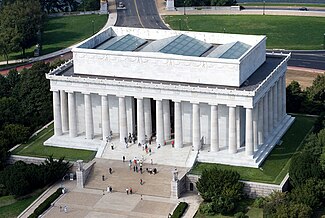| Xystus |
Xyst is the alternative spelling for Xystus meaning portico, a architectural greek term for the covering of a gymnasium where sporting events took place, generally supported by many columns.
Today, you will see many copies of these great structures throughout time all over the world.
 Like Klenze's Proplaen (Gateway) in Munich 1854-1862
Like Klenze's Proplaen (Gateway) in Munich 1854-1862Or
Thomas Hamilton's design for the Royal High School in Edinburgh. Built in 1831
Then there's
Leo von Klenze's Wahalla built in
Regensburg, Bavaria, 1842.

I think this is a beautiful building in the District of Columbia:
The Lincoln National Monument. The architecture was designed by Harry Bacon. The Greek building is in the form a Duric Temple, but still notice the Xystus surrounding the building supported by the huge columns. Construction began February 12, 1914 and was completed and dedicated May 30, 1922.

This style of Greek architecture will continue to grace the world with its beautiful structures for centuries to come.

5 comments:
I like the greek structure, but I feel too many buildings look the same anymore. We build for practicality instead of making a building visually appealing like they did. We need more places like this! :)
Lovely buildings, it makes them seem more friendly.
Love this post. I really like architecture.
An interesting post – it's something I could have used on my posts if I'd known about it. A great letter X.
I knew it was Greek architecture, but I didn't know the name, or the specific history.
Thank you for the informative post!
Post a Comment